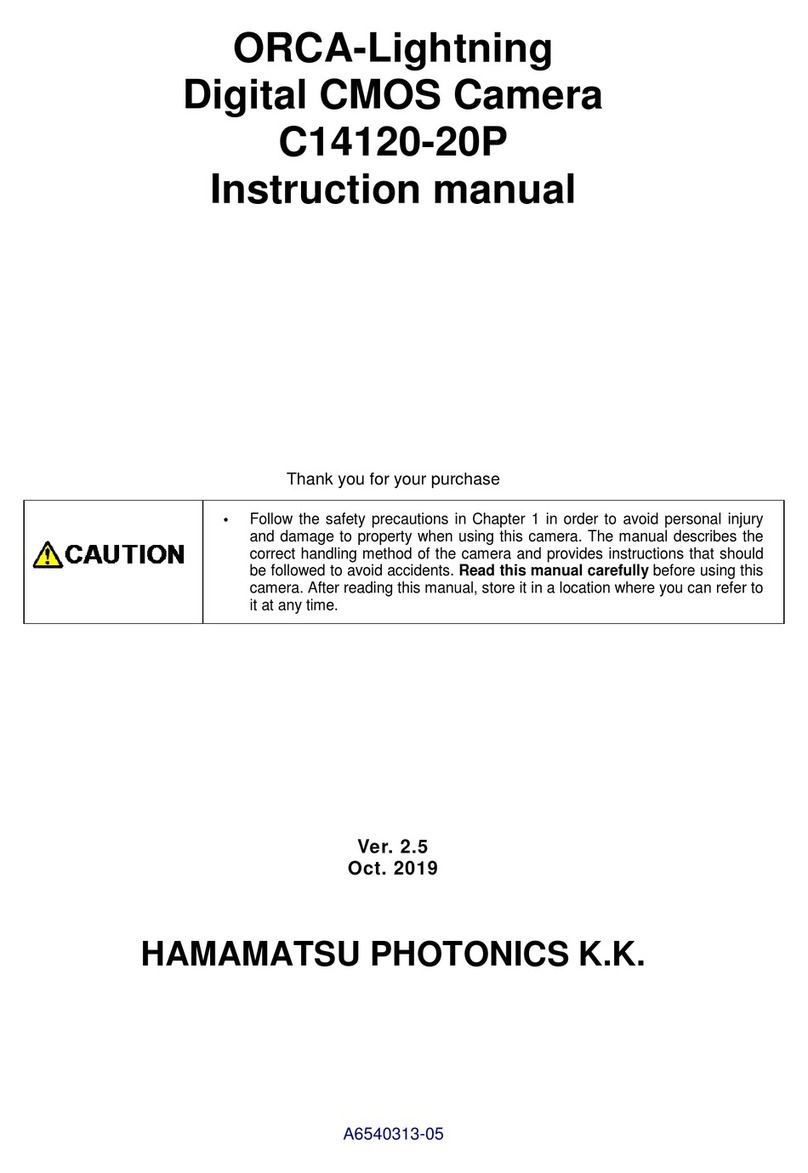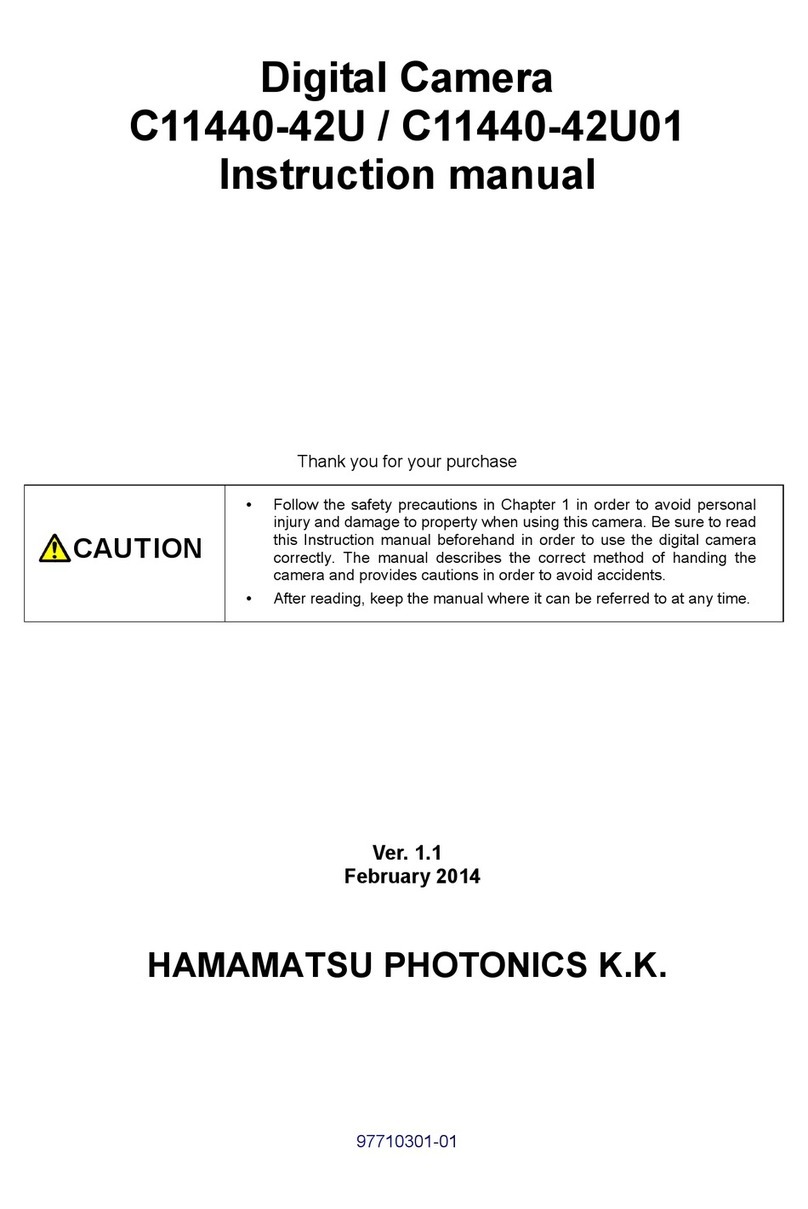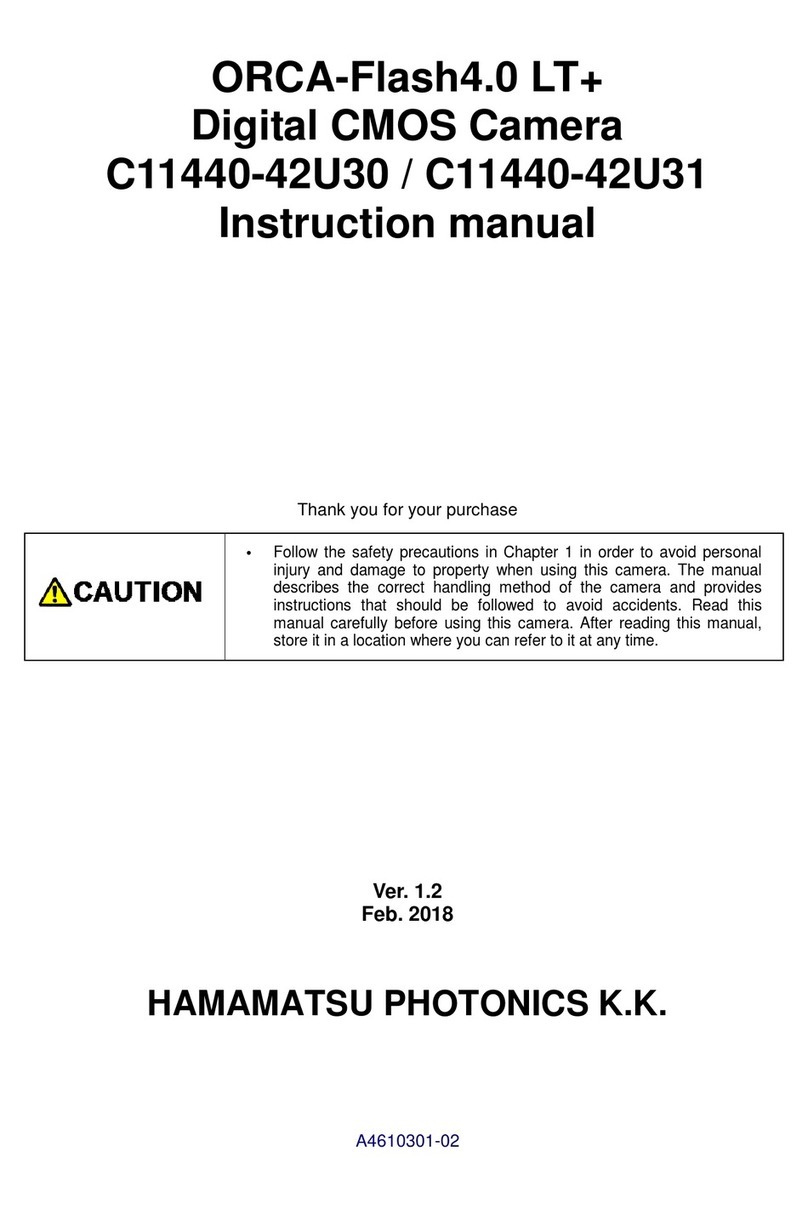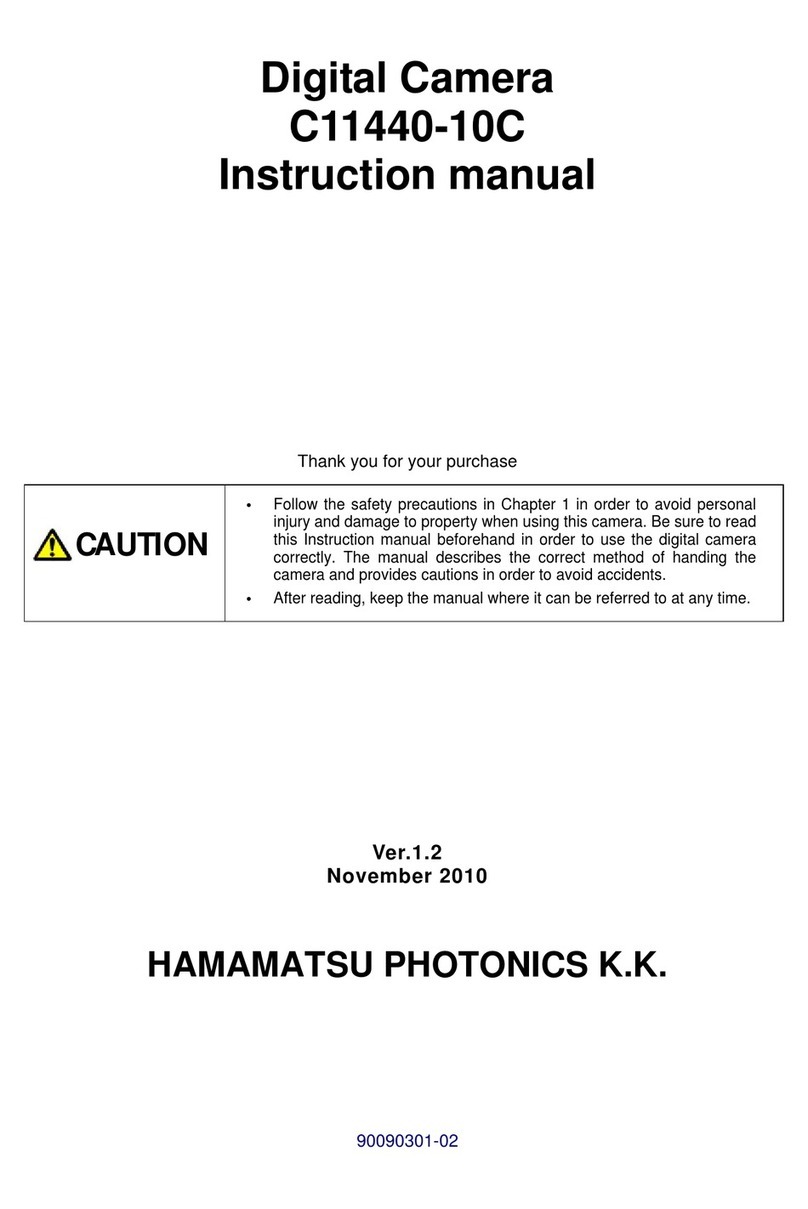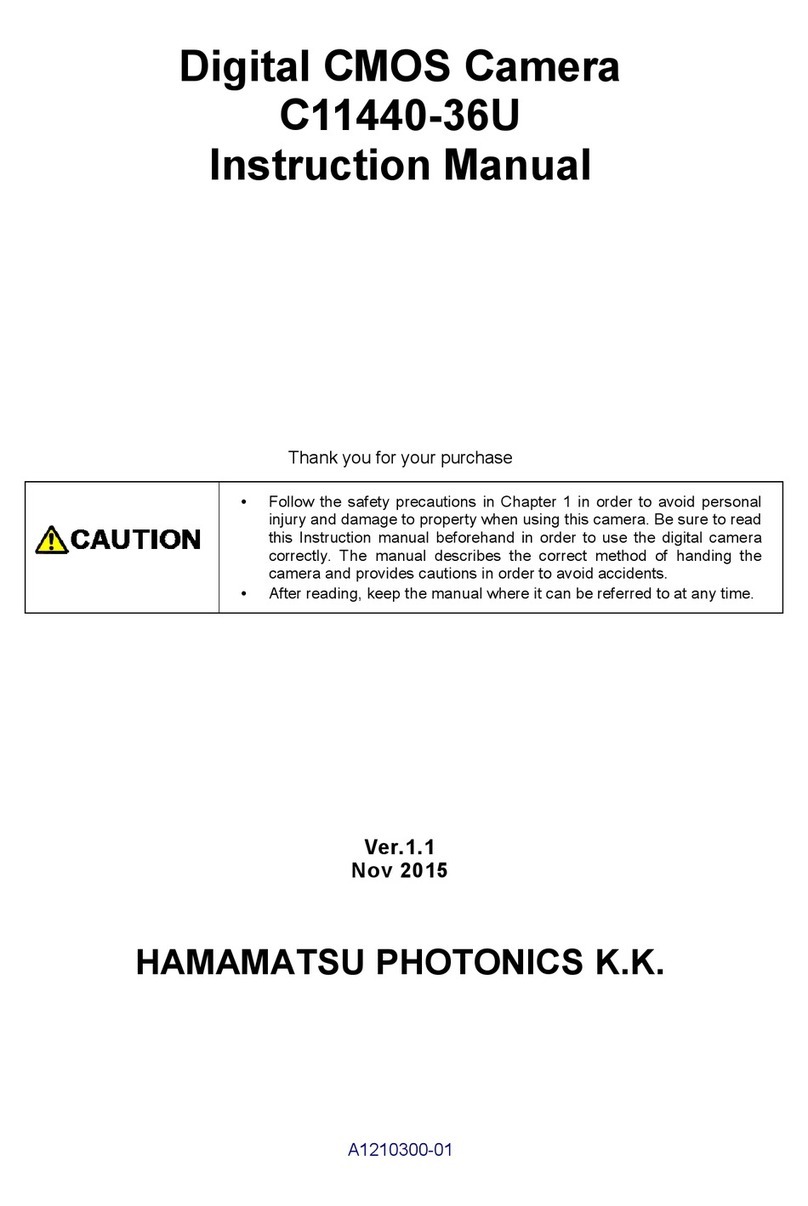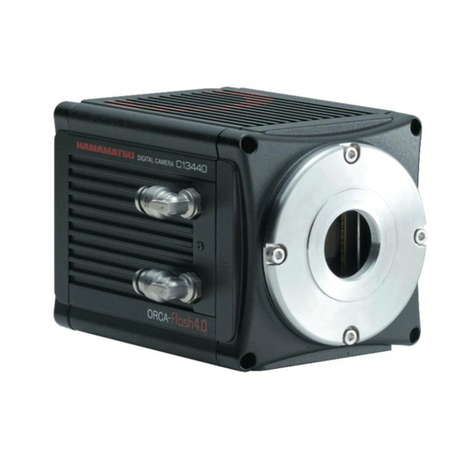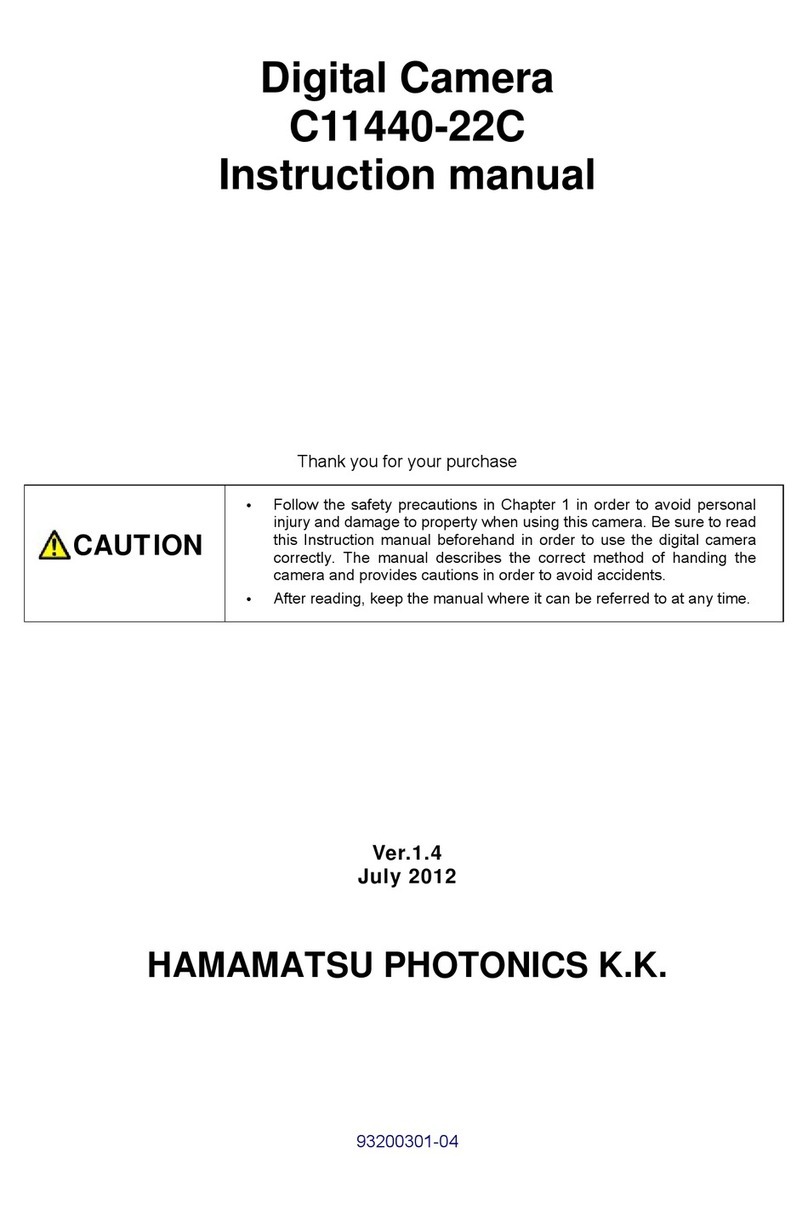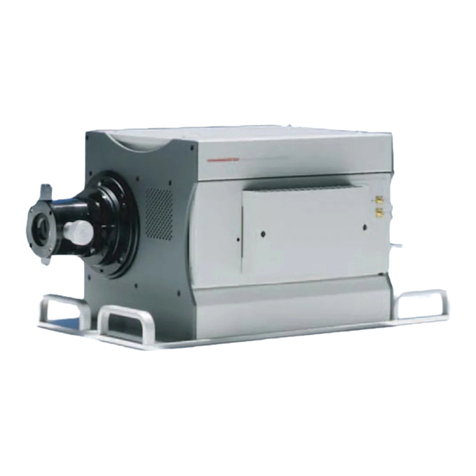
qCMOS Camera C15550-20UP Instruction manual_Ver.1.0
10
Contents
1. SAFETY PRECAUTIONS...................................................................................3
1-1 SYMBOLS ........................................................................................................................... 3
1-2 CLASSIFICATION OF WARNINGS .................................................................................... 3
2. CHECK THE CONTENTS OF PACKAGE..........................................................8
3. INSTALLATION..................................................................................................9
4. OVERVIEW.......................................................................................................12
5. FEATURES.......................................................................................................12
6. NAME AND FUNCTION OF PARTS ................................................................15
7. CONNECTION..................................................................................................18
8. WATER COOLING ...........................................................................................20
8-1 CAUTIONS ........................................................................................................................ 20
8-2 CONNECTION OF WATER COOLING HOSES ...............................................................22
8-3 DISCONNECTION OF WATER COOLING HOSES ......................................................... 23
9. OPERATIONS ..................................................................................................24
9-1 OPERATING PRECAUTIONS .......................................................................................... 24
9-2 PREPARATING FOR IMAGING........................................................................................ 25
9-3 IMAGING ........................................................................................................................... 25
9-4 END OF IMAGING............................................................................................................. 25
9-5 STARTUP DCAM CONFIGURATOR ................................................................................ 26
9-6 UPDATE PROCEDURE OF COAXPRESS INTERFACE BOARD ................................... 28
10. DESCRIPTION OF CMOS IMAGE SENSOR ...................................................29
10-1 THEORY OF CMOS IMAGE SENSOR ............................................................................. 29
10-2 READOUT METHOD OF CMOS IMAGE SENSOR.......................................................... 30
10-3 PRECAUTION WHEN USING CMOS IMAGE SENSOR..................................................30
11. DESCRIPTION OF VARIOUS FUNCTIONS ....................................................31
11-1 AREA READOUT MODE, PHOTON NUMBER RESOLVING MODE .............................. 31
11-2 LIGHTSHEET READOUT MODE...................................................................................... 50
11-3 REAL-TIME DEFECT PIXEL CORRECTION ................................................................... 58
11-4 DATA REDUCTION FUNCTIONS..................................................................................... 59
11-5 MASTER PULSE ............................................................................................................... 60
12. MAINTENANCE................................................................................................61

